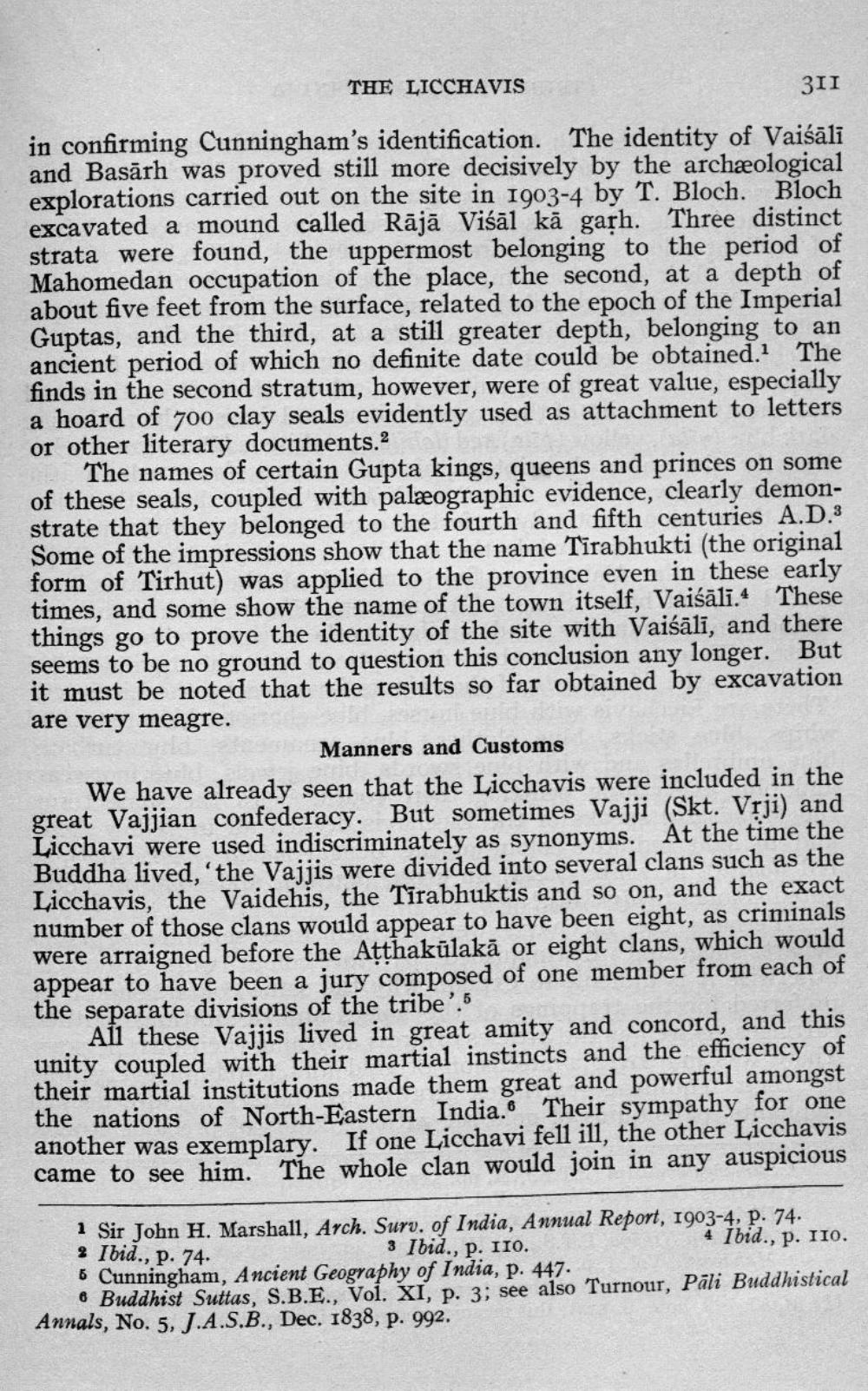________________
THE LICCHAVIS
3II
in confirming Cunningham's identification. The identity of Vaiśāli and Basārh was proved still more decisively by the archæological explorations carried out on the site in 1903-4 by T. Bloch. Bloch excavated a mound called Rājā Viśāl kā garh. Three distinct strata were found, the uppermost belonging to the period of Mahomedan occupation of the place, the second, at a depth of about five feet from the surface, related to the epoch of the Imperial Guptas, and the third, at a still greater depth, belonging to an ancient period of which no definite date could be obtained. The finds in the second stratum, however, were of great value, especially a hoard of 700 clay seals evidently used as attachment to letters or other literary documents.2
The names of certain Gupta kings, queens and princes on some of these seals, coupled with palæographic evidence, clearly demonstrate that they belonged to the fourth and fifth centuries A.D.3 Some of the impressions show that the name Tirabhukti (the original form of Tirhut) was applied to the province even in these early times, and some show the name of the town itself, Vaiśāli.4 These things go to prove the identity of the site with Vaiśālī, and there seems to be no ground to question this conclusion any longer. But it must be noted that the results so far obtained by excavation are very meagre.
Manners and Customs We have already seen that the Licchavis were included in the great Vajjian confederacy. But sometimes Vajji (Skt. Vrji) and Licchavi were used indiscriminately as synonyms. At the time the Buddha lived, 'the Vajjis were divided into several clans such as the Licchavis, the Vaidehis, the Tīrabhuktis and so on, and the exact number of those clans would appear to have been eight, as criminals were arraigned before the Atthakūlakā or eight clans, which would appear to have been a jury composed of one member from each of the separate divisions of the tribe'.
All these Vajjis lived in great amity and concord, and this unity coupled with their martial instincts and the efficiency of their martial institutions made them great and powerful amongst the nations of North-Eastern India. Their sympathy for one another was exemplary. If one Licchavi fell ill, the other Licchavis came to see him. The whole clan would join in any auspicious
1 Sir John H. Marshall, Arch. Surv. of India, Annual Report, 1903-4, p. 74. 2 Ibid., p. 74. 3 Ibid., p. IIO.
4 Ibid., p. 110. 6 Cunningham, Ancient Geography of India, p. 447.
& Buddhist Suttas, S.B.E., Vol. XI, p. 3; see also Turnour, Pāli Buddhistical Annals, No. 5, J.A.S.B., Dec. 1838, p. 992.




